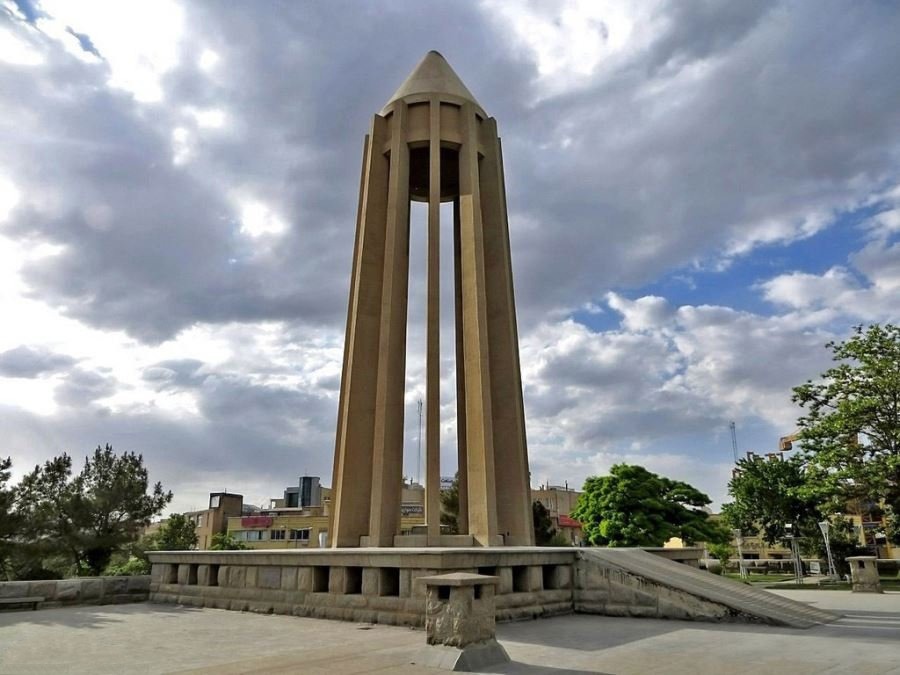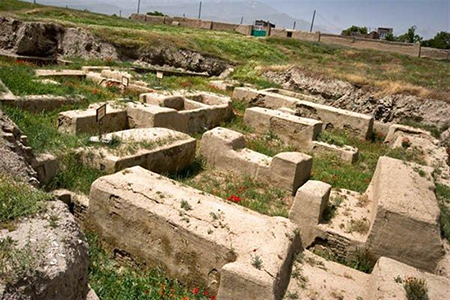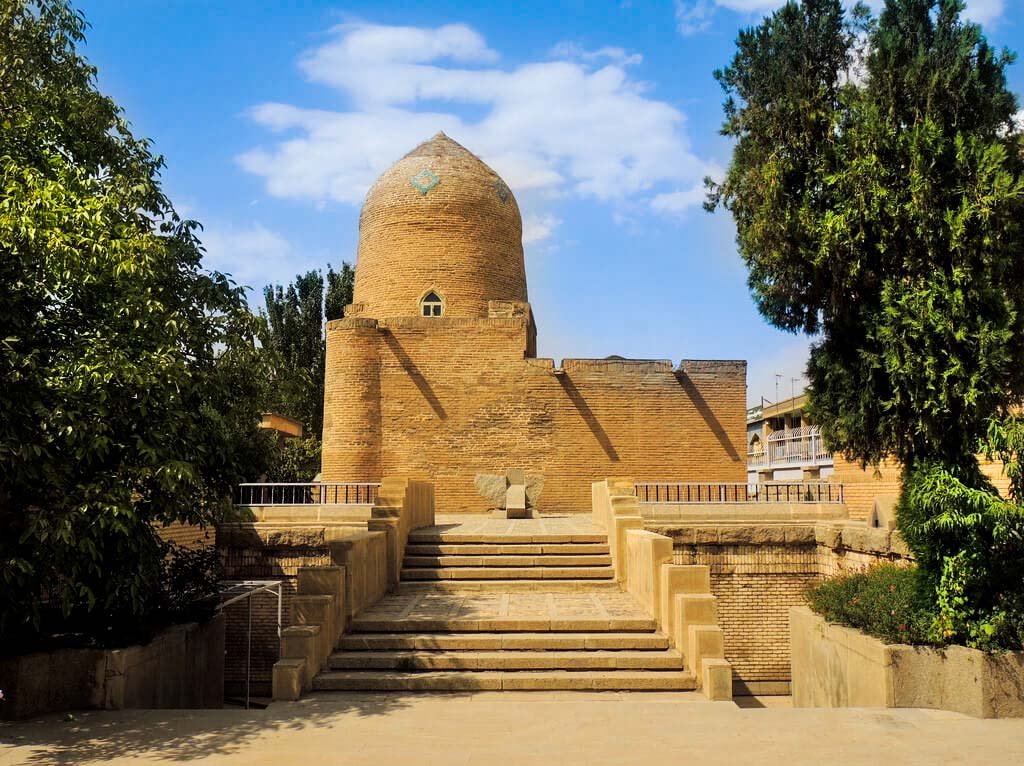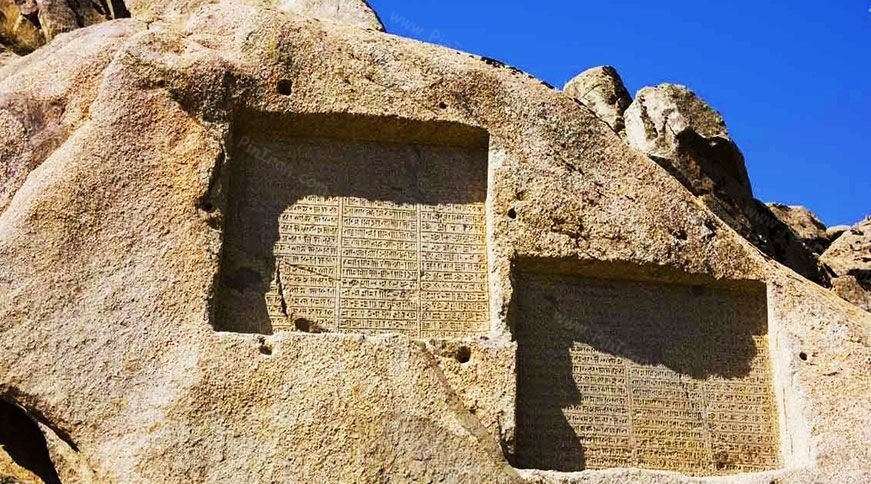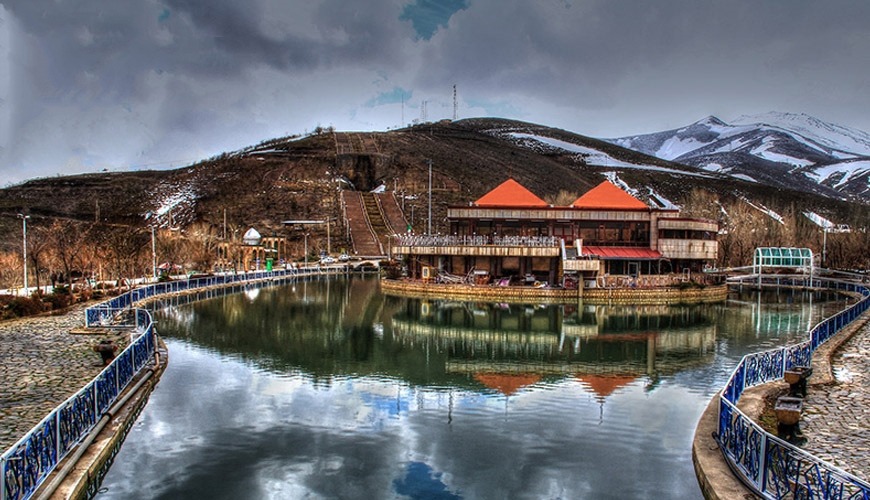Hamadan
Hamedan
Hamedan is the ancient capital of the Medes kingdom, the predecessors of the Persians of the same Indo-Iranian lineage.
The remains of Hegmataneh, so the city was called in Antiquity, can be visited at the archaeological site under the same name in the city without any trace of 7 legendary walls surrounding the city is found, each one had to be colored differently, one gold the other silver according to Herodotus.
The city was on the royal road to Mesopotamia and the decisive defeat of the Sassanids against the Muslim army in 636 A.D., which turned the page in Persian history, happened at Nahavand 110 km away.
Its geographical location makes an ethnic crossbreeding, the population being mixed with Kurds, Turks, and Lurs and Laks presents a demographic wealth.
The great scholar and philosopher Avicenna was to find his composure here and the two biblical figures Ester (wife of Achaemenid king Xerxes) and his uncle Mourdekhay, a courtier, were buried in a humble mausoleum in the city center.
To integrate the old circular city plan into a new modern architecture, the German engineer in charge of the project, created a central roundabout from which 6 arteries going through the city started, the double arcade square has 12 small domes.
The other surviving site from the ancient times, Ganj-Nameh (the treasure map) called by the locals, takes us to the foot of Mount Alvande (3510 m) which dominates the city. The site has two inscriptions of Darios and Xerexes in cuneiform noting the family tree of Darios in order to justify his Achaemenid lineage. In the end of the day The tepe of Abass-Abad offers a panoramic view of the city.
Hamedan is known for its ceramic designs and a palette typical of the region.
You need at least 1 day to visit:
Avicenna
Ibn Sina also known as Abu Ali Sina and often known in the West as Avicenna (c. 980 – June 1037), was a Persian polymath who is regarded as one of the most significant physicians, astronomers, thinkers and writers of the Islamic Golden Age, and the father of early modern medicine. Sajjad H. Rizvi has called Avicenna “arguably the most influential philosopher of the pre-modern era”.He was a Muslim Peripatetic philosopher influenced by Greek Aristotelian philosophy. Of the 450 works he is believed to have written, around 240 have survived, including 150 on philosophy and 40 on medicine.
His most famous works are The Book of Healing, a philosophical and scientific encyclopedia, and The Canon of Medicine, a medical encyclopedia which became a standard medical text at many medieval universities and remained in use as late as 1650.
Besides philosophy and medicine, Avicenna’s corpus includes writings on astronomy, alchemy, geography and geology, psychology, Islamic theology, logic, mathematics, physics and works of poetry.
The Tell Hagmatana, also called Tepe Hegmataneh (thought to correspond to the ancient citadel of Ecbatana) has a circumference of 1.4 kilometres with an area of about 40 hectares, which corresponds to a report from Polybius, although the ancient Greek and Roman accounts likely exaggerate Ecbatana’s wealth, splendor, and extravagance.[2] Relatively few finds thus far can be firmly dated to the Median era. There is a “small, open-sided room with four corner columns supporting a domed ceiling,” similar to a Median-era structure from Tepe Nush-i Jan, interpreted as a Zoroastrian fire temple.[4] Excavations have revealed a massive defensive wall made of mud-bricks, and dated to the Median period based on a comparison to Tepe Nush-i Jan and Godin Tepe. There are also two column bases from the Achaemenid period, and some mud-brick structures thought to be from the Median or Achaemenid period. A badly-damaged stone lion sculpture is of disputed date: it may be Achaemenid or Parthian. Numerous Parthian-era constructions attest to Ecbatana’s status as a summer capital for the Parthian rulers.[2] In 2006, excavations in a limited area of Hagmatana hill failed to discover anything older than the Parthian period, but this does not rule out older archaeological layers existing elsewhere within the 35-hectare site.[5]
Ecbatana was first excavated in 1913 by Charles Fossey.[6] Excavations have been limited due to the modern town covering most of the ancient site.[7] In 1969 the Ministry of Culture and Art began buying property on the tell in support of archaeology, though excavation did not begin until 1983. By 2007, 12 seasons of excavation had occurred.[8] The work on the tell is ongoing.
The Tomb of Esther and Mordechai is located in Hamadan, Iran. Iranian Jews believe it houses the remains of the biblical Queen Esther and her cousin Mordechai, and is the most important pilgrimage site for Jews in Iran, and was declared a World Heritage Site by the Iranian government in 2008. There is no mention of it in either the Bavli or the Jerusalem Talmud and the Iranian Jewish tradition has not been supported by Jews beyond Iran. It was built in Ilkhanat period 14 century.
Ganjnameh (lit. ’Treasure Book’) is located southwest of Hamadan (ancient Ecbatana) in western Iran, at an altitude of c. 2000 meters across Mount Alvand.The site is home to two trilingual Achaemenid cuneiform inscriptions. The inscription on the upper left was created on the order of Achaemenid King Darius the Great (r. 522–486 BC) and the one on the right by his son King Xerxes the Great (r. 486–465 BC).
The Abbas Abad Hill is located in a scenic area west of Hamedan city and at the foot of the Alvand Mountain range. This hill offers a beautiful view of the city and is a popular spot among locals. During World War II, the Germans created a pool on this hill to meet the water and electricity demands of the city. Today, a restaurant has been built at the center of this pool.

